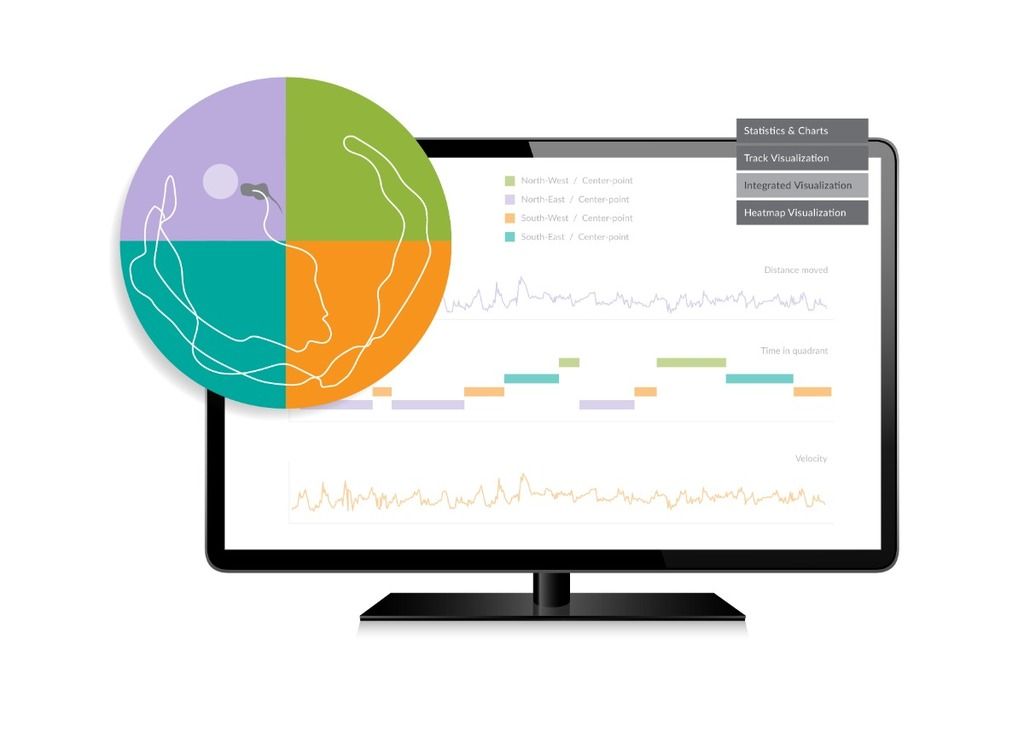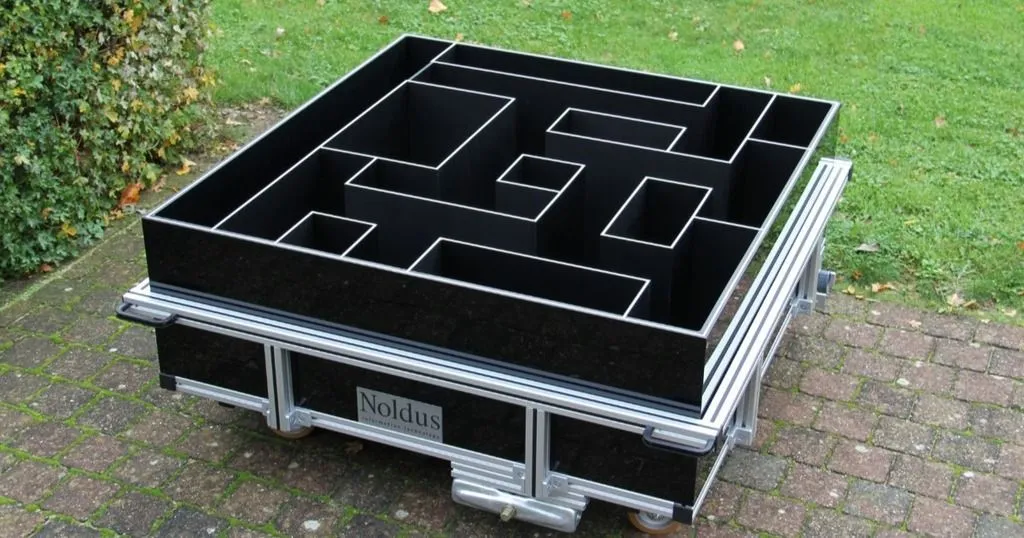Using video tracking to study operant behavior in rodents
What is operant behavior? And how can we use software such as EthoVision XT to increase our understanding in the learning and memory processes involved in these studies?
Posted by
Published on
Thu 22 Sep. 2022
Topics
| Learning And Memory | Mice | Neuroscience | Operant Conditioning | Rats |
Within the field of learning and memory research lies operant behavior, also called operant conditioning. On the first hand this form of learning and memory seems straightforward to study. However it can become quite complex when trying to interpret certain responses in an animal that are linked to a certain degree of emotionality in humans. In this blog we explain what these types of behaviors are, and how they are effectively measured in rodents using video tracking tools.
What is operant behavior?
The term "operant" was first used in B.F. Skinner's book The Behavior of Organisms, in 1938. In operant conditioning, three main types of stimuli are used to reinforce behavior: positive reinforcement, negative reinforcement and punishment.
It is called operant because it produces some type of consequence that can be understood and learned. In classical conditioning, Pavlov’s dog could not control it’s salivation. With operant behavior, also called operant conditioning, as a result of reward or punishment, a response (for example getting a treat) is learned and the memory is retained. This gives us insight in the functioning of the brain in memory formation and retention.
How is operant behavior measured?
The operant conditioning chamber, sometimes called a ‘Skinner box’ or ‘Skinner box apparatus’, is an enclosure used to study operant behavior. Such a chamber has several compartments that can be separated by doors that can open upon activation of, for example, an electric buzzer or upon pressing of a lever.
In these chambers, (typically) rodents can be taught to press levers (or perform certain tasks) in order to obtain food rewards such as pellets. The likelihood that the animal will repeat, or not, such a behavior is dependent on an associated consequence, which can be either positive or negative (reinforcement or punishment).
A negative stimulus, i.e. punishment, is an event that decreases the likelihood of (in this case) a rat or mouse repeating an action. An example of such a stimulus is a foot shock. In this situation a lever press can initiate a foot shock. But this negative stimulus can also be turned around into a negative reinforcement, where if the lever is not pressed, a foot shock is given, thus enforcing lever-pressing behavior.
By using punishment and reinforcement in this way, it can help us understand and learn how memories are retained and how they are linked to our previous experiences. In other words, operant behavior is that which operates on the environment, producing consequences. It is the result of operant conditioning and can be observed in many species.

How do you train operant tasks?
Behavioral tasks in an operant conditioning chamber are typically performed in two stages.
Stage 1: Training the task
The first stage of training involves learning a new operant response, such as “touch”, “jump” or “avoid”. This can be accomplished through simple trial-and-error training, where you have your subject perform the task and reward them when they've reached their goal: ‘press the lever, receive reward’, or as described earlier; ‘press the lever, receive punishment’.
Stage 2: Recording behavior
Once an operant response has been learned, you'll want to record all of its occurrences during a given period of time so that you can later analyze whether it was actually reinforced (i.e., reinforced at least once). This establishes, whereafter you can begin recording behavior.
This is a critical step because it allows for future analysis and comparison of your results with other studies. To record behavior, you will need to use video tracking software. The advancements in video tracking technology have greatly improved our ability to follow behavior throughout training and testing sessions. The ability to directly analyze your data is one of the most exciting aspects of using video tracking software in operant conditioning tasks.
Why is video tracking essential to study operant behavior?
Video tracking is extensively used in operant conditioning research because it allows researchers to record multiple variables at once while keeping track of what happened during each trial. But video tracking is also a useful tool when studying other aspects of behavior during operant behavior studies such as social interactions, anxiety-like behavior or depressive-like behavior.
By tracking these types of behaviors it allows researchers to observe what’s happening around the animal(s) without having to move them around too much, thus standardizing the environment. This standardization is essential since it helps us isolate important pieces of information from other factors that may interfere with our results, or would rather give us added readouts.
Now that we've covered some background on operant behavior, let's take a look at a recent study in this field that ties in video tracking.
Example of an operant conditioning study
Obesity research: EthoVision XT in action
A recent study by Wahli and Huwart et al set out to investigate the food reward system, as this shows neuronal and behavioral dysregulation during obesity [1]. They investigated if inflammation in the striatum was affected in diet-induced obesity (DIO) mice compared to control-fed mice, while also testing the potential effects of gut bacteria on the reward system.
For this reason, the mice that were subjected to DIO were split again in a control (placebo) group, and a group that was daily administered Akkermansia muciniphiladaily, an intestinal bacterium heavily associated with obesity, type 2 diabetes and inflammation due to its function(s) in increasing mucus thickness and increasing gut barrier function. This bacterium generally triggers host metabolic and immune responses.
Liking and wanting
Noldus’ PhenoTyper, powered by EthoVision XT, was used to perform a food preference test to test the ‘liking’ component, while these cages were also used as operant conditioning chambers to test the ‘wanting’ component in food reward (operant wall test). The ‘liking’ component is related to the pleasure felt by eating a specific rewarding food whereas the ‘wanting’ component is related to the motivation to obtain it.
Food preference test
The food preference test showed that DIO mice showed a lower preference towards choosing a high-fat high-sucrose diet compared to mice that were exposed to a palatable diet for the first time. This shows that there is a dysregulation of the hedonic component of food intake associated with (diet-induced) obesity.
Operant wall test
The operant conditioning paradigm confirmed the altered motivational reward system associated with obesity, since the DIO mice did not press a lever to obtain a food reward (from the operant wall) as much as control/lean mice. It is suggested that these effects are underlying of a hypo-functioning of the dopaminergic pathway in the brain.
The effect of gut bacteria
Daily administration of Akkermansia muciniphiladaily showed to be able to diminish these dysregulated responses associated with obesity, possibly through a decreased activation of inflammatory pathways and lipid-sensing in the striatum.
This study, which utilizes the full potential of fully integrated operant conditioning chambers (video tracking and hardware control), provides exciting evidence in the fields of gut microbiota and behavioral neuroscience, and how those can be integrated to develop innovative therapeutics to improve food-reward responses in obesity, neuropsychiatry, or other (metabolic) diseases.
Video tracking technology has greatly improved our ability to study operant behavior
Video tracking technology has greatly improved our ability to follow behavior throughout training and testing sessions in operant conditioning tests (and others alike). Software like EthoVision XT allows us to record the interactions between animals and their environment and then analyze them, in real time, with advanced algorithms that can distinguish between different types of tasks.
It makes it possible to see what happens when certain stimuli are presented and you can use this information to analyze the effects of different parameters on operant behavior, such as time or type of response. This allows you to quantify the amount of time an animal spends in one place when given access to food pellets versus another location where there were no pellets available (or vice versa), adding additional information to your readouts. This technology has truly helped us understand how rats and mice learn new behaviors in novel environments.

Reference
[1] S.J.P. Huwart et al., “Food Reward Alterations during Obesity Are Associated with Inflammation in the Striatum in Mice: Beneficial Effects of Akkermansia muciniphila,” Cells 2022, Vol. 11, Page 2534, vol. 11, no. 16, p. 2534, Aug. 2022, doi: 10.3390/CELLS11162534.
Related Posts

What is a placebo? And how does it work?

WHY use a Y-maze? Automating learning and memory tests in rodents

